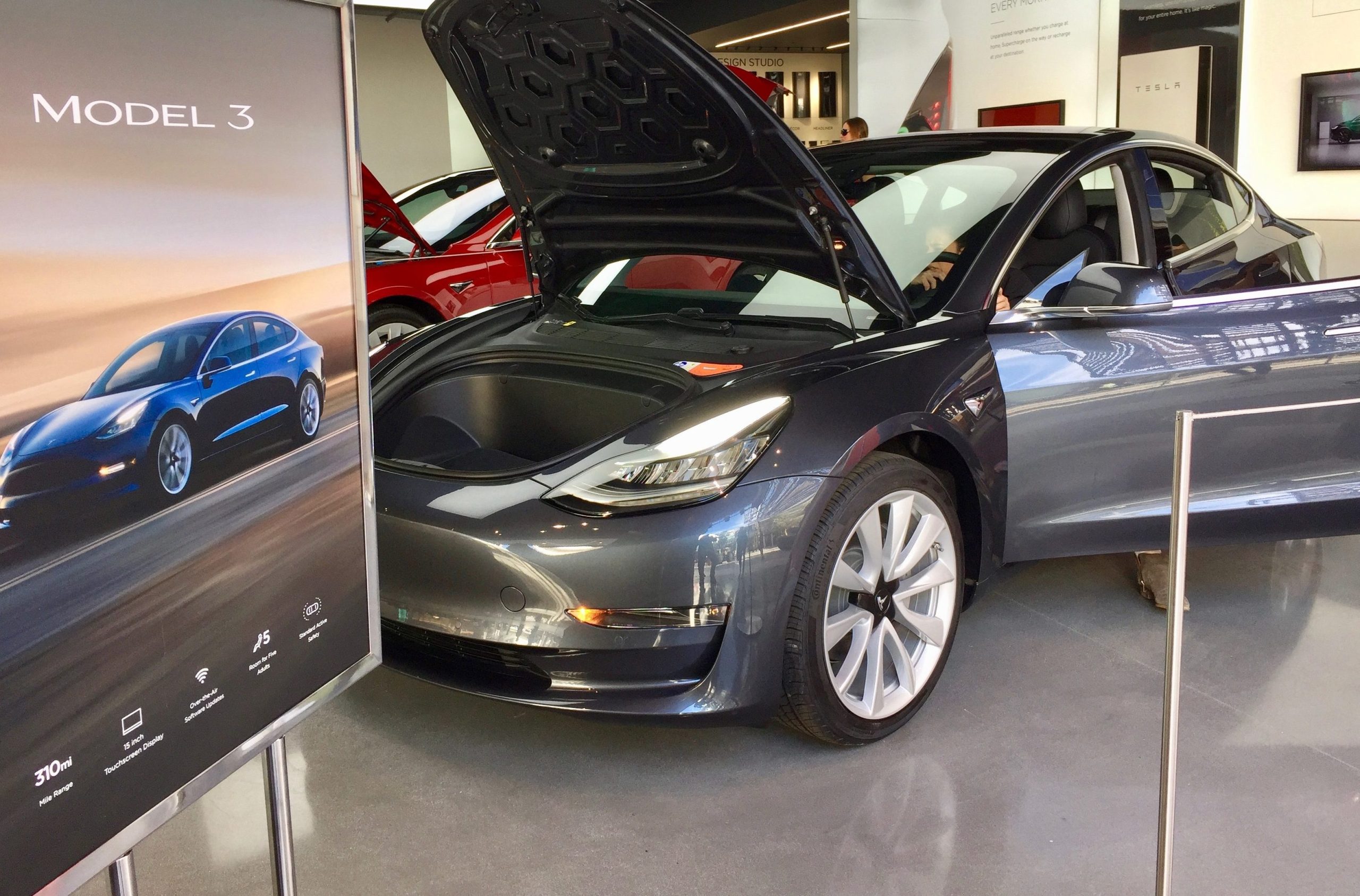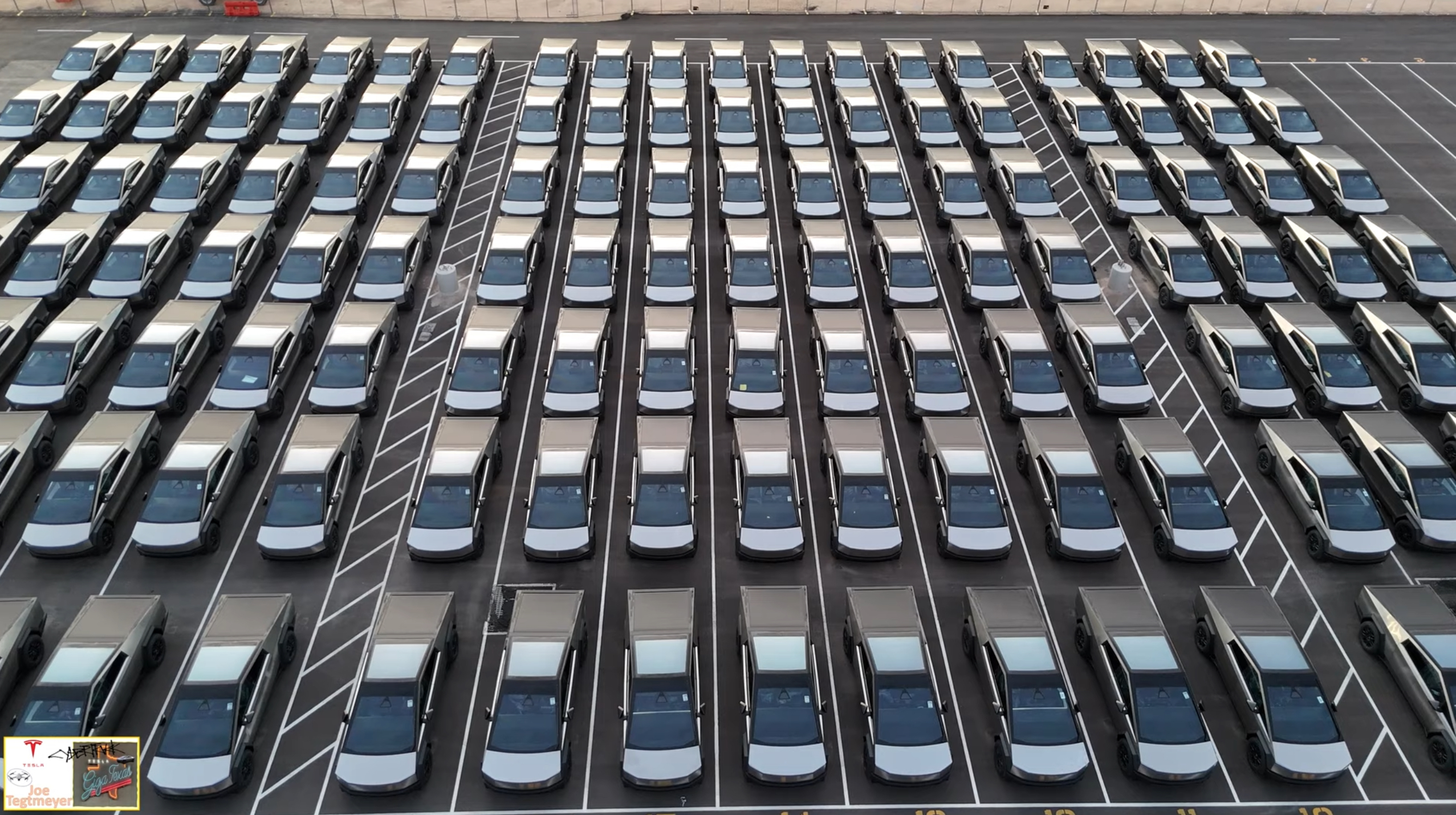

Investor's Corner
Tesla will start being profitable by September, says Wall St veteran Gene Munster
Wall Street analyst Gene Munster from Loup Ventures has issued his expectations for Tesla’s (NASDAQ:TSLA) financial performance this coming quarter, stating that the Elon Musk-led company will start being profitable by September 2018.
In a statement to CNBC‘s Fast Money, Munster stated that Tesla would probably not be “wildly profitable” by September, but Elon Musk’s 6,000/week target for the Model 3 would move the company’s finances towards positive territories.
“This 5,000 production number was the first time in about nine months he’s gotten one right. I think it’s safe to always dial back what he’s saying, that’s why we think Tesla’s going to meet the production number by the end of the September quarter. If they hit that number, it’s going to equate to 48,000 model 3s produced in the September quarter. That should get them to profitability, slightly profitable. It’s not going to be wildly profitable in September; I just want to warn everyone, but it moves them in the right direction.”
Tesla’s production blitz at the final week of Q2 2018 resulted in the electric car and energy company reaching its all-elusive goal of producing 5,000 Model 3 in a single week. Despite accomplishing its Model 3 targets and exhibiting a 55% growth in production compared to Q2 2017, however, Tesla stock took a nosedive on Monday, ending the day down 2.30% and trading at $335.07.
Part of the reason behind the dip in the company’s stocks were negative reports from some Wall Street analysts including CFRA’s Efraim Levy, who downgraded his rating of Tesla stock from Hold to Sell. The CFRA analyst stated that the company would likely be unable to sustain its production rate for the Model 3. Levy also criticized Tesla’s long-implemented $2,500 deposit for the compact electric car as an “aggressive attempt to meet otherwise difficult targets of being cash flow positive in Q3.”
Other Wall Street analysts, however, had far different outlooks. Apart from Gene Munster, Guggenheim Securities analyst Rob Cihra released a favorable Q3 forecast for Tesla, reiterating his Buy rating for the company’s stocks. According to Cihra, Tesla’s story as it heads for the second half of 2018 is one of leverage, as the company starts absorbing more of its fixed cost of production and expanding its margins. The Guggenheim Securities analyst also noted stated that Tesla’s in-house development of the vehicles’ components would prove to be a difference-maker.
“Tesla reaffirmed its guide for positive GAAP net income and cash flow in Q3 and Q4, which is in line with our estimates, but we believe much more optimistic than many investors continue to assume. Yet while six months later than initially projected, we continue to estimate that with Tesla now hitting its 5K/week production bogey for Model 3, that sets up prospects for the company’s overall economic model to flip from sizeable cash-burn in 1H18E to profitability in 2H18E.
“With just small tweaks post Q2 deliveries, our EPS estimates continue to be >$10 in 2019E and >$18 in 2020E, remaining well above consensus. Because Tesla makes so much of its cars in-house, we believe its proportion of FIXED cost/vehicle are particularly high (driving losses and cash-burn today) but with the flip-side then being that as Model 3 volumes now ramp, their fixed-cost absorption should make Tesla’s LEVERAGE that much higher,” Cihra wrote, according to a Barron’s report.
Guggenheim Securities expects Tesla’s total vehicle production to hit 58,000 this coming quarter, followed by 67,000 in Q4 2018.
Tesla is currently attempting to achieve profitability by Q3 or Q4 2018. Responding to a report from The Economist alleging that Tesla would do a capital raise this year, Elon Musk declared that the company would start being profitable by the third or fourth quarter. Musk doubled down on profitability in the company’s Q1 2018 earnings call, when he stated that it was “high time” for Tesla to become profitable. In order to accomplish this, Tesla has adopted a series of strategies, including trimming 9% of its workforce and opening orders for the higher-priced variants of the Model 3.
Disclosure: I have no ownership in shares of TSLA and have no plans to initiate any positions within 72 hours.

Investor's Corner
Tesla gets bold Robotaxi prediction from Wall Street firm
Last week, Andrew Percoco took over Tesla analysis for Morgan Stanley from Adam Jonas, who covered the stock for years. Percoco seems to be less optimistic and bullish on Tesla shares, while still being fair and balanced in his analysis.

Tesla (NASDAQ: TSLA) received a bold Robotaxi prediction from Morgan Stanley, which anticipates a dramatic increase in the size of the company’s autonomous ride-hailing suite in the coming years.
Last week, Andrew Percoco took over Tesla analysis for Morgan Stanley from Adam Jonas, who covered the stock for years. Percoco seems to be less optimistic and bullish on Tesla shares, while still being fair and balanced in his analysis.
Percoco dug into the Robotaxi fleet and its expansion in the coming years in his latest note, released on Tuesday. The firm expects Tesla to increase the Robotaxi fleet size to 1,000 vehicles in 2026. However, that’s small-scale compared to what they expect from Tesla in a decade.
Tesla expands Robotaxi app access once again, this time on a global scale
By 2035, Morgan Stanley believes there will be one million Robotaxis on the road across multiple cities, a major jump and a considerable fleet size. We assume this means the fleet of vehicles Tesla will operate internally, and not including passenger-owned vehicles that could be added through software updates.
He also listed three specific catalysts that investors should pay attention to, as these will represent the company being on track to achieve its Robotaxi dreams:
- Opening Robotaxi to the public without a Safety Monitor. Timing is unclear, but it appears that Tesla is getting closer by the day.
- Improvement in safety metrics without the Safety Monitor. Tesla’s ability to improve its safety metrics as it scales miles driven without the Safety Monitor is imperative as it looks to scale in new states and cities in 2026.
- Cybercab start of production, targeted for April 2026. Tesla’s Cybercab is a purpose-built vehicle (no steering wheel or pedals, only two seats) that is expected to be produced through its state-of-the-art unboxed manufacturing process, offering further cost reductions and thus accelerating adoption over time.
Robotaxi stands to be one of Tesla’s most significant revenue contributors, especially as the company plans to continue expanding its ride-hailing service across the world in the coming years.
Its current deployment strategy is controlled and conservative to avoid any drastic and potentially program-ruining incidents.
So far, the program, which is active in Austin and the California Bay Area, has been widely successful.
Investor's Corner
Tesla analyst realizes one big thing about the stock: deliveries are losing importance

Tesla analyst Dan Levy of Barclays realized one big thing about the stock moving into 2026: vehicle deliveries are losing importance.
As a new era of Tesla seems to be on the horizon, the concern about vehicle deliveries and annual growth seems to be fading, at least according to many investors.
Even CEO Elon Musk has implied at times that the automotive side, as a whole, will only make up a small percentage of Tesla’s total valuation, as Optimus and AI begin to shine with importance.
He said in April:
“The future of the company is fundamentally based on large-scale autonomous cars and large-scale and large volume, vast numbers of autonomous humanoid robots.”
Almost all of Tesla’s value long-term will be from AI & robots, both vehicle & humanoid
— Elon Musk (@elonmusk) September 11, 2023
Levy wrote in a note to investors that Tesla’s Q4 delivery figures “likely won’t matter for the stock.” Barclays said in the note that it expects deliveries to be “soft” for the quarter.
In years past, Tesla analysts, investors, and fans were focused on automotive growth.
Cars were truly the biggest thing the stock had to offer: Tesla was a growing automotive company with a lot of prowess in AI and software, but deliveries held the most impact, along with vehicle pricing. These types of things had huge impacts on the stock years ago.
In fact, several large swings occurred because of Tesla either beating or missing delivery estimates:
- January 3, 2022: +13.53%, record deliveries at the time
- January 3, 2023: -12.24%, missed deliveries
- July 2, 2024: +10.20%, beat delivery expectations
- October 3, 2022: -8.61%, sharp miss due to Shanghai factory shutdown
- July 2, 2020: +7.95%, topped low COVID-era expectations with sizeable beat on deliveries
It has become more apparent over the past few quarters that delivery estimates have significantly less focus from investors, who are instead looking for progress in AI, Optimus, Cybercab, and other projects.
These things are the future of the company, and although Tesla will always sell cars, the stock is more impacted by the software the vehicle is running, and not necessarily the vehicle itself.
Investor's Corner
SpaceX IPO is coming, CEO Elon Musk confirms
However, it appears Musk is ready for SpaceX to go public, as Ars Technica Senior Space Editor Eric Berger wrote an op-ed that indicated he thought SpaceX would go public soon. Musk replied, basically confirming it.

Elon Musk confirmed through a post on X that a SpaceX initial public offering (IPO) is on the way after hinting at it several times earlier this year.
It also comes one day after Bloomberg reported that SpaceX was aiming for a valuation of $1.5 trillion, adding that it wanted to raise $30 billion.
Musk has been transparent for most of the year that he wanted to try to figure out a way to get Tesla shareholders to invest in SpaceX, giving them access to the stock.
He has also recognized the issues of having a public stock, like litigation exposure, quarterly reporting pressures, and other inconveniences.
However, it appears Musk is ready for SpaceX to go public, as Ars Technica Senior Space Editor Eric Berger wrote an op-ed that indicated he thought SpaceX would go public soon.
Musk replied, basically confirming it:
As usual, Eric is accurate
— Elon Musk (@elonmusk) December 10, 2025
Berger believes the IPO would help support the need for $30 billion or more in capital needed to fund AI integration projects, such as space-based data centers and lunar satellite factories. Musk confirmed recently that SpaceX “will be doing” data centers in orbit.
AI appears to be a “key part” of SpaceX getting to Musk, Berger also wrote. When writing about whether or not Optimus is a viable project and product for the company, he says that none of that matters. Musk thinks it is, and that’s all that matters.
It seems like Musk has certainly mulled something this big for a very long time, and the idea of taking SpaceX public is not just likely; it is necessary for the company to get to Mars.
The details of when SpaceX will finally hit that public status are not known. Many of the reports that came out over the past few days indicate it would happen in 2026, so sooner rather than later.
But there are a lot of things on Musk’s plate early next year, especially with Cybercab production, the potential launch of Unsupervised Full Self-Driving, and the Roadster unveiling, all planned for Q1.








